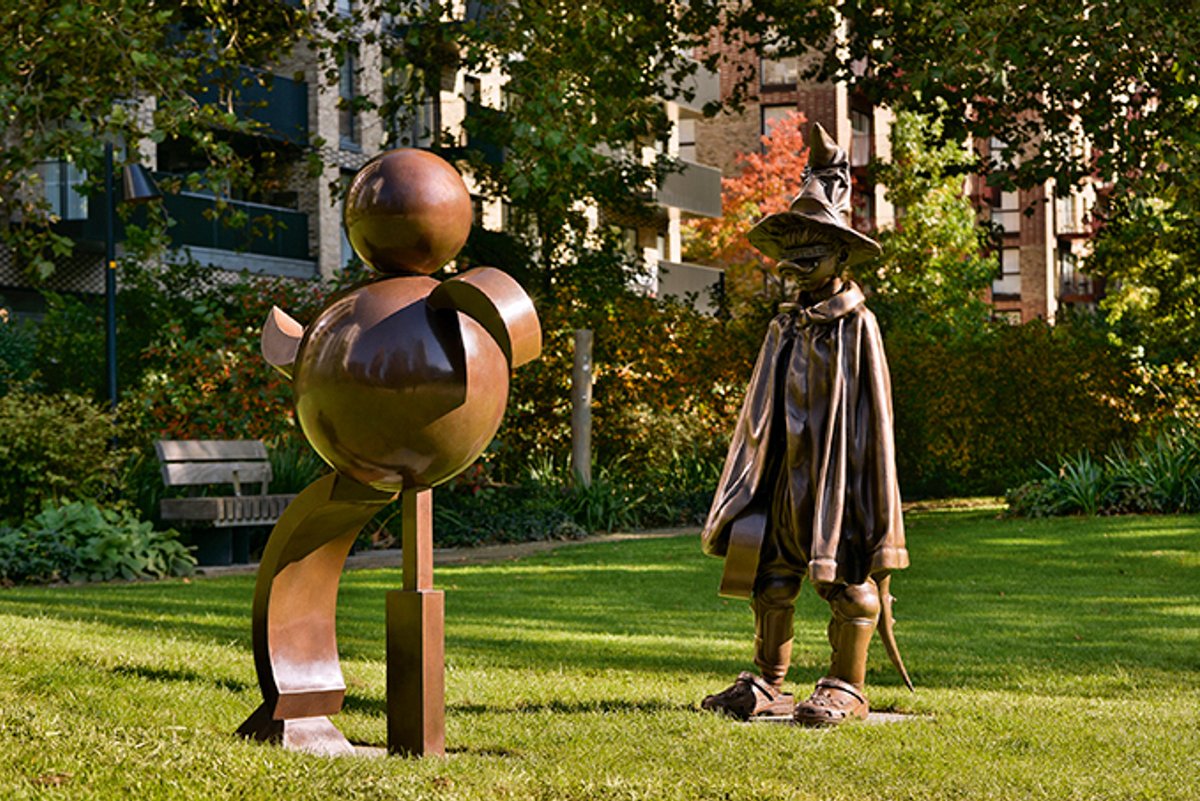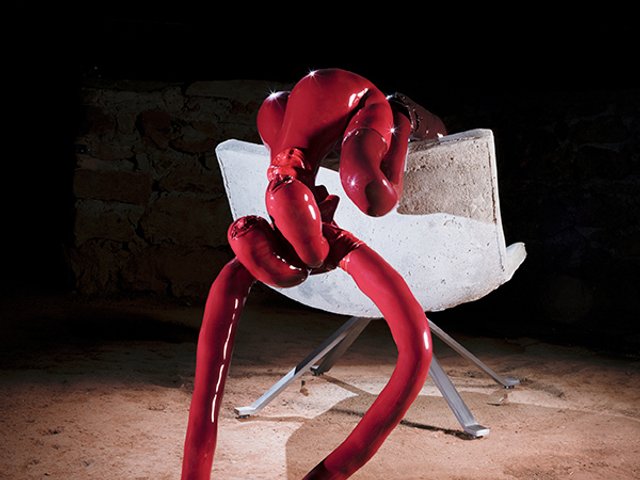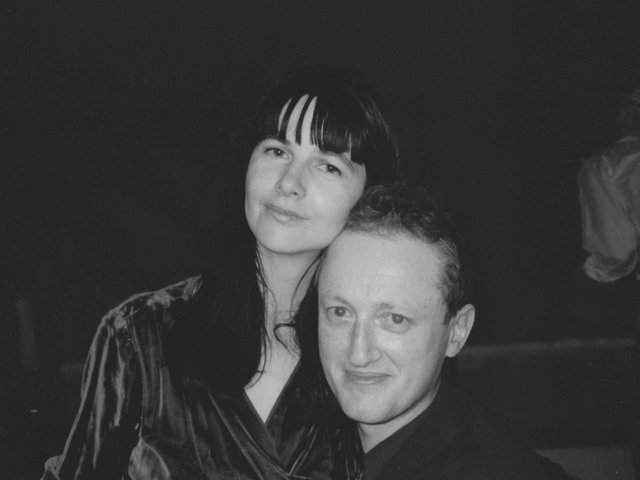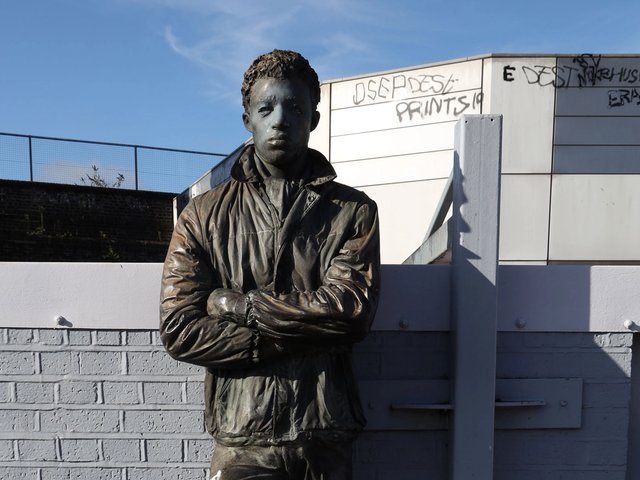Public sculpture, especially figurative bronze public sculpture, gets a bad rap these days. Most of the bronzes that punctuate UK cities seem to be either morally problematic—depicting a figure tied to slavery, for example—ignored or garishly kitsch; and it’s hard for artists to express anything fresh or meaningful in a medium so laden with cultural baggage and grandiose connotations of preciousness. All of which makes Ryan Gander’s six new bronze sculptures that have just been installed in London’s Elephant and Castle district—his first permanent public work in London—such a welcome addition to the city’s landscape.
The idiosyncratic works were made in close collaboration with local primary schoolchildren. They include life-sized statues of three of the children, depicted decked out in an eccentric array of masks, hats and flamboyant costumes of their own choosing. Each sculpture in this trio, placed directly on the grass, is rendered even more fantastical by being paired with a bizarre bronze object—a cartoonish campfire, a basketball/football hybrid and a strange figure composed of abstract shapes—which also emerged out of extensive discussions with Gander’s junior-co-conspirators.
Not public art, but art for the public
“A lot of public art is authoritarian; it’s a celebration of power and not for the public,” says Gander. “For me, the excitement and the challenge was to trick the audience into approaching these figurative bronzes without that horrible stigma. It was trying to defy expectation.” He makes the crucial distinction between public art and art for the public, pointing out that “In France they say art pour la public; it’s a completely different way of thinking about it, whereas we just think about art in public space.”
Letting schoolkids call the shots was an effective way to puncture pomposity. There’s nothing hubristic about this trio. Their quirky fancy dress—a witch’s hat paired with a futuristic visor and a duck’s bill, and a wrestling championship belt matched with cricket pads, inflatable armbands and a superhero mask—cuts an undoubted dash while at the same time defying any identification of the sitter, along with any specific readings of gender, time or place. (Although a pair of outsized ornament-studded Crocs is rather a giveaway as to their 21st-century origins.)
Eroding hierarchies
Know Not Your Place in the World is the overall title of these works, again destabilising the traditionally status-affirming role of bronze sculpture. The children decided the individual captions, too, which are more like a ten-year-old’s stream of consciousness than an official label. “Bossy Doh Doh Rich Crow-low Sea”, reads one, while each nameplate further erodes time-honoured artistic hierarchies by including several children’s names alongside Gander’s. “It was a big collaboration between a little group of kids and I wanted it to be as uncompetitive as possible,” he told me, while adding that he made a point of working with the children that he identified as “still looking for their thing in the world”.
Gander, a father of three, is well known for his shape-shifting art: his sculpture alone ranges from a vending machine dispensing various real and facsimile rocks, to an entire betting shop remade in glass and a talking animatronic mouse. Whatever the mode or medium—he also writes, and makes prints, photographs, films and performances—he’s constantly prodding at the parameters of our language and expectations, interrogating what it means to make art and what a work of art can, and should, be made to say and do. Key to this is a consideration of where as well as how each work should be shown, and it is this intense engagement with both their conception and their location that also helps to make these sculptures so effective.
Blitzed and bulldozed
Elephant and Castle is an embattled area of mixed fortunes. It was badly bombed in the Blitz and more recently hit when its Brutalist housing estates were razed and many of the local inhabitants dispersed due to soaring property prices. The creation of the two-acre Elephant Park, with its carefully preserved mature trees and surrounding small businesses, offers the beleaguered neighbourhood—which is still a predominantly low-income area—a rare and welcome social amenity that will benefit all its inhabitants. And now that park contains Gander’s sculptures.
In this new year, and hopefully over many more to come, a generation of children from the community can go about their lives knowing that they and their contemporaries have been singled out to be immortalised in bronze by an internationally acclaimed artist, but depicted on their own terms and according to their own choices.





